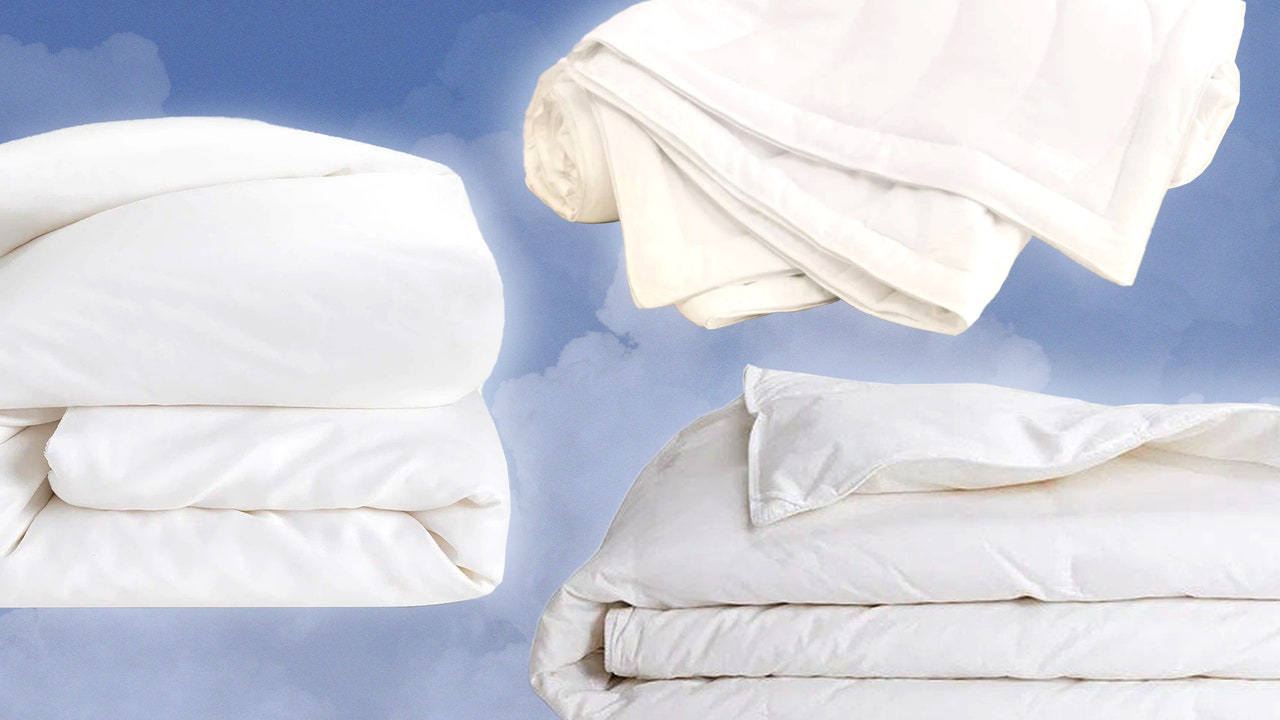Why should you choose this comforter? The Serena & Lily Colfax Comforter is appealing on multiple levels: The recycled poly-fill serves up thermal insulation (meaning you’re less likely to overheat), as well as humidity control. It’s also lightweight, breathable, and cozy (it’s squish-able and fluffy). And the beautiful stitch pattern on this 100% cotton-covered comforter is cute enough to display on its own—we love bedding with versatility. It comes in only one soft color option, though: a hydrangea hue. This means it’ll need to match the color theme of your bedroom, which is the only major downside.
What to Look for in a Comforter
- Fill Power: Fill power measures the fluffiness and insulation of the comforter. The higher the fill power, the fluffier and warmer it will feel.
- Corner Loops: If there are corner loops or ties, that means you can use the comforter as a duvet insert. If there are no loops, the comforter can be vulnerable to clumping and bunching within the duvet.
- Fill Content: Fill content is usually classified as either down or down-alternative options. Down refers to filling that’s made with duck down or goose feathers, and a down alternative is pretty much anything else (including cotton and polyester fills, recycled materials, plant-based fibers, etc.).
- Comforter Cover: Material matters! What’s the thread count of the cotton? Is it a cotton sateen shell that’s smooth and silky or a crisp percale cotton? If you’re a hot sleeper, you’ll want to note if the cover uses a a cooling material with breathability, like eucalyptus or Tencel lyocell.
- Size and Color: Looking for a specific color or size? We’ll call out what’s available in each of our picks.
How to Care for Your Comforter
Simply put, always follow the care instructions that come with your comforter. They will optimize the lifespan of your comforter and help prevent issues like pilling, tearing, clumping, or wrinkling. Most comforters are either dry clean only or machine washable. Those that can be machine washed need a large machine (some may only fit in a commercial machine like those at laundromats) with cold or warm water, no bleach, and no fabric softener. Some can be machine dried on low heat, while others should be air dried.
FAQs
What’s the difference between a comforter and a duvet?
A comforter, sometimes called a duvet insert, is a thick blanket stuffed with fill material for extra warmth and insulation. The blanket is often stitched into multiple box-shaped pockets to keep the fill evenly distributed. It can be used with or without a duvet cover, which is a machine washable decorative cover that protects the comforter from dirt, sweat, animal fur, etc. Duvet covers are typically attached to comforters with ties that connect in the corners of the cover and comforter.
What type of comforter is best to keep you cool?
Comforters are generally designed to provide warmth, but some materials are more breathable and don’t insulate as much body heat. These include polyester, Tencel, cotton, and lightweight down alternative fibers. If you overheat or sweat while sleeping, avoid down fill, since it runs warm. If you like the feeling of down, consider a lightweight or all-season down comforter, since these have less fill than ultra warm versions.
What is the comfiest comforter material?
Comfort is subjective, so the answer to that question depends on what you find comfortable. Do you like a lightweight, breathable comforter? Look for Tencel, cotton, or polyester. If you like a fluffy, squish-able feel, down or down alternative works well. For added luxury, consider silk. If you don’t end up liking the feel of the shell fabric, you can add a duvet cover that feels soft and cuddly.

